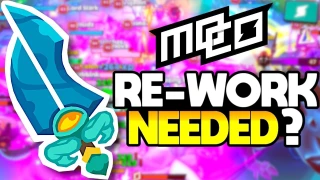Will You Pay $100 for Games? Future Game Prices & Value
Gamers are buzzing about a shocking rumor: Grand Theft Auto 6 could launch with a $100 price tag. Is this just sticker shock, or a sign of things to come? Let's explore the rising costs of games and if players will actually open their wallets wider.
The $100 Question: Is it Really That Absurd?
At first glance, $100 for a game seems outrageous. But, digging deeper reveals a more nuanced picture. The price of AAA games has remained relatively flat for 15 years, while inflation and development costs have soared.
Think about it: making games today is far more expensive than it used to be. Yet, the standard price hasn't kept pace. This gap is a key reason for the rise of microtransactions and other monetization methods.
Inflation is Real: Games Aren't Immune
It's not just games; inflation affects every industry. Analysts point out that game prices haven't adjusted for inflation over time. In fact, a $50 game in 1985 would cost around $145 today when adjusted for inflation.
This perspective makes a $100 price point less shocking, especially for massive titles like GTA 6. Industry insiders suggest some publishers are hoping Rockstar will "break the $70 ceiling" and pave the way for industry-wide price increases.
Why Are Games So Expensive to Make Now?
Game development budgets are ballooning. It's not just "evil corporations" complaining. Even Larian Studios, known for the critically acclaimed Baldur's Gate 3, acknowledges rising costs.
Capcom's president noted development costs are "100 times higher" than in the Famicom era. While sales are also much higher now, the cost increase is significant.
Where does the money go? Massive open worlds, advanced graphics (like water physics and detailed facial motion capture), and lengthy development cycles all contribute.
Gamers often question if these graphical advancements are worth the cost, especially if they detract from gameplay and core experiences.
Will Gamers Actually Pay $100?
Despite initial outrage, many experts believe gamers *will* pay $100 for highly anticipated games like GTA 6. Think about it: people spend significant amounts on deluxe editions, season passes, and premium bundles already.
Consider games like Baldur's Gate 3 or Elden Ring. Many would argue their immense value justifies a higher price, and players likely *would* have paid $100 for them.
The fear of missing out (FOMO) is a powerful motivator. For games like GTA 6, the hype is immense, and many fans will likely overcome price resistance to play it day one.
The $70 Price Point: A Recent History Lesson
The jump from $60 to $70 for AAA games happened quickly. Take-Two led the charge, using the new console generation as cover.
PlayStation and even Nintendo followed suit, with Tears of the Kingdom leveraging hype to justify a higher price.
However, not every game can command that price. Redfall's failure at $70 shows that value still matters. Quick discounts on $70 games also suggest some pushback, though perhaps not enough to deter publishers.
Value vs. Price: What Are You Really Paying For?
Ultimately, the perceived value of a game is more important than the sticker price. Players are willing to pay more for games that offer deep, engaging experiences.
Publishers with strong track records and high-quality games, like Capcom with Monster Hunter Wilds, can command higher prices. Saber Interactive even priced Space Marine 2 at $70, fearing a lower price would signal lower quality.
This "reverse price anchoring" is real. In a $70 standard world, a $60 game might seem less desirable, even if it's excellent.
The Microtransaction Trap: Are We Paying Less for Content?
While the upfront price is debated, microtransactions are a major factor in game revenue. Consumer spending in real terms is surprisingly flat, suggesting players are spending the same amount, but less is going to core game content.
Instead, more money flows into "low-value upcharges" like skins and battle passes. These are incredibly profitable, often with 80-90% profit margins compared to the lower margins on full game sales.
This shift in revenue models impacts game design. Narrative DLCs, once common, are less frequent because they don't generate the same recurring revenue as microtransactions.
The focus shifts to creating "Skinner box slop games" designed to maximize engagement and microtransaction sales, potentially at the expense of artistic depth and meaningful experiences.
The Future: Higher Prices and More of the Same?
While $100 for GTA 6's base price is uncertain, a premium early access edition at that price is highly likely. An $80 standard price wouldn't be surprising either.
The industry wants higher prices, citing inflation as justification. This argument is partially valid, but it ignores other factors.
Are rising costs also due to inefficiencies and risky "live service" bets that fail? Are resources being allocated to areas that don't directly enhance gameplay value for the average player?
And importantly, while game prices are rising, are we really getting "whole games" anymore? Or are we paying for access to a storefront designed to extract even more money through additional purchases?
A Glimmer of Hope?
Despite these concerns, there is hope. Some developers, like Remedy, are still focused on creating high-quality, artistic games that prioritize player experience. These are the types of games that can justify their price through sheer value and quality.
Final Thoughts: What Does It All Mean?
Game prices are likely to continue rising. While inflation plays a role, the industry's pursuit of ever-increasing revenue is a major driver.
The challenge is to ensure that higher prices translate to better games and not just more aggressive monetization and a focus on superficial features over core gameplay.
Ultimately, the value proposition will determine what players are willing to pay. Games that offer truly exceptional experiences will always find an audience, even at higher price points.





